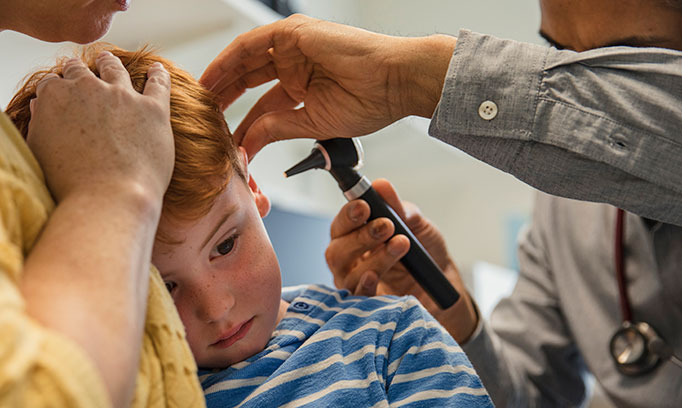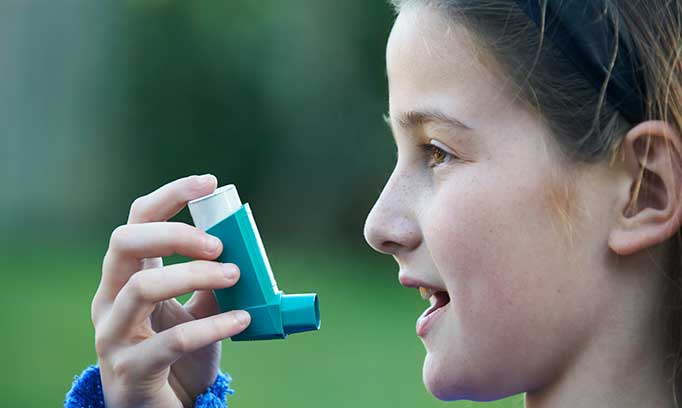
HEAL
When you should get care for an ear infection
Posted February 13, 2020
- Ear infections occur more often in children than adults
- Ear infections may last a short time or can be chronic, last a long time and recur often.
- Chronic ear infections can cause permanent damage to the middle or inner ear.
If you have kids, there’s a good chance he or she has had or will have at least one ear infection. Sometimes an ear infection will go away on its own, in just a few days, but sometimes they are chronic, last a long time or recur and may need antibiotics to treat the infection. Read on to find out how to spot an ear infection and when to seek treatment.
What is an ear infection?
An ear infection is the presence of fluid in your middle ear accompanied by symptoms of ear drum inflammation and bulging. Most ear infections effect the middle or inner ear. Ear infections are not contagious; however, the virus that often proceeds an ear infection can be. Some ear infections that occur on the outside of the ear are a different type of infection, known as “swimmer’s ear”, and are treated differently. Learn more about swimmer’s ear.
What causes an ear infection?
Ear infections are caused by bacteria or viruses in the middle ear. How do they get there? Usually through the eustachian tubes—thin passages that connect the ear to the back of the throat. Here are some common causes:
- Cold, flu or allergies. These illnesses and conditions can cause swelling or congestion in the nose and throat. When that happens, the eustachian tubes can become blocked or swollen shut. Fluid, bacteria and viruses may be trapped inside, causing an infection.
- Swollen adenoids. Adenoids are small glands in the back of the throat. An illness or other issue can cause them to swell, which can block the eustachian tubes and trap fluid in the ear.
- Being a child. Because their eustachian tubes are narrower and not fully developed, kids are much more likely than adults to get ear infections.
Other causes of ear pain
An ear infection is just one condition that can cause ear pain. Here are some other common causes:
- a blocked eustachian tube, even if it’s not infected
- injury to the ear
- inflammation or infection in the ear canal, such as swimmer’s ear
- infection of external ear tissues
- sore throat or throat infection
- jaw problems including temporomandibular joint (TMJ) disorders
Symptoms of an ear infection:
Although ear infections are more common in children, they can also happen in adults. Symptoms include:
- ear pain (often worse when lying down)
- fever
- increased fussiness
- loss of appetite
- pulling on the ear
- temporary hearing loss (most common in older children)
- vomiting or diarrhea.
The risk of an ear infection increases with:
- bottle or pacifier use
- changes in air pressure (during air travel)
- daycare attendance
- recent or current upper respiratory infection
- tobacco smoke and air pollution.
Treatment for an ear infection:
Sometimes an ear infection will go away on its own, other times antibiotics are needed. To minimize complications, it is important that you seek treatment if symptoms are severe or last more than 1-2 days. If your child is six months or younger and he or she shows signs of an ear infection, or has fever above 102 with severe pain, seek care immediately.
At home remedies for an ear infection:
The following at home treatment can help make your child more comfortable when they have an ear infection:
- a warm cloth applied to the ear
- over-the- counter pain medication such as ibuprofen or acetaminophen (please take out ear drops)
- for adults: decongestants such as Sudafed.
WHAT YOU CAN DO
-
Get care now
The right care--right away -
Find a provider
Search now
MORE LIKE THIS
EMPOWER YOURSELF
Get fun, inspiring, provider-reviewed articles sent to your inbox.
Sign up for our email newsletter





